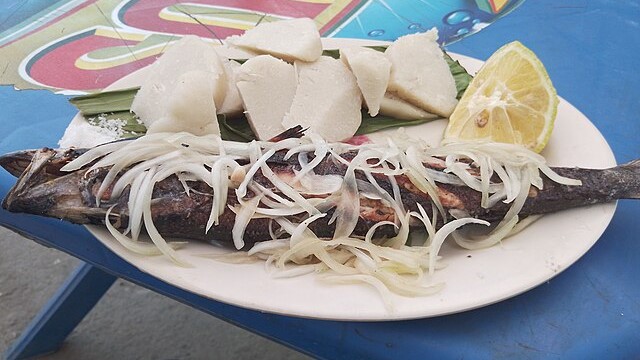In the kitchens of Bujumbura and the open-air hearths of rural villages, the flavors of Burundi simmer quietly, telling stories as old as the hills that frame its borders. While this small, landlocked nation may not hold a prominent place on the global culinary map, its food speaks fluently of history, agriculture, and community. Each dish draws from the country’s fertile fields, rivers, and traditions, offering a portrait of resilience plated in humble portions.
Boko sits at the center of the Burundian table. Made from maize or cassava flour, it is both sustenance and ritual, a dish woven into the rhythm of daily life. Its soft, dense texture pairs easily with a variety of accompaniments—beans slow-cooked in tomato, leafy greens sautéed with spices, or the delicate tang of fish stew. Boko’s appeal lies in its adaptability, filling bowls in both modest homes and crowded market stalls. Served on communal platters, it is less a single recipe than a shared experience, one shaped by the hands that prepare it and the company that consumes it.
If Boko is the anchor, Isombe is its vibrant green counterpoint. Made from cassava leaves sautéed with onions, tomatoes, and a measured blend of spices, Isombe offers a deep, earthy flavor that belies its simplicity. Traditionally paired with rice or sweet plantains, it carries a freshness that speaks to Burundi’s reliance on locally grown ingredients. In many households, the dish is less a side than a centerpiece—nutritious, filling, and emblematic of the country’s agricultural abundance.
On the streets, the smoke of open grills signals another staple: Brochettes. These skewers—typically goat or beef—are marinated, threaded, and grilled over glowing coals until the edges char and the meat turns tender. Eaten hot, often with fried plantains or a small mound of rice, brochettes capture the immediacy of Burundian street life: the crackle of fire, the tang of spice, the mingling aromas of meat and woodsmoke.
Burundian cuisine may not rely on intricate preparations or rare ingredients, but it thrives on balance—between land and table, between necessity and celebration. These dishes, modest in origin yet rich in meaning, carry forward centuries-old traditions while feeding the present. In every bite, the nation’s agricultural roots and communal spirit remain unmistakable.
Sources:
- Food and Agriculture Organization of the United Nations (FAO). Burundi Country Profile: Agriculture and Food Systems. 2024.
- International Fund for Agricultural Development (IFAD). “Nutrition and Rural Development in Burundi.” 2023.
- Ndayizeye, Marie-Louise. “Burundian Cuisine: A Culinary Heritage.” East African Culinary Journal, Vol. 14, No. 2, 2022.


